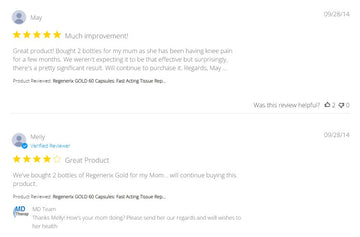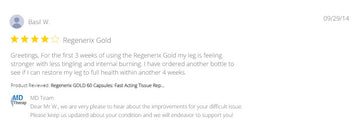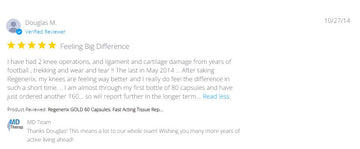Active Cervical Rotation: Restore Easy Head-Turns & Tame Desk-Neck
by MD therapeutics on Aug 17, 2025
Why active cervical rotation helps (the principles)
-
Facet “glide” & synovial wash: Slow, pain-free head-turns lubricate the small zygapophyseal (facet) joints and ease capsular stiffness—great after long screen time.
-
Foraminal mechanics: Gentle rotation can open one side’s neural foramen while avoiding compressive end-ranges, helping calm mild nerve-root irritability (keep ranges small and symptom-guided).
-
Deep flexor + suboccipital coordination: Moving with a light chin-tuck teaches segmental control so the head turns on a stable base rather than shearing through stiff segments.
-
Vestibular/oculomotor reassurance: Smooth, steady rotations with relaxed breathing reduce threat and muscle guarding—useful after whiplash or “cranky” desk necks.
How to do it (precise, range-aware)
-
Posture: Sit tall. Lengthen the crown of your head; add a micro chin-tuck (no slouching).
-
Move: Inhale; on the exhale, turn your nose slowly toward the right until a mild 2–3/10 stretch—no pinching. Inhale back to center. Repeat left.
-
Dosage: 2–3 sets × 6–8 reps/side, 1–2×/day. Each rep lasts ~5–8 seconds.
-
Tempo cues: Eyes travel first, then nose follows; shoulders stay quiet.
-
Options:
-
Supine with towel under skull if standing is irritable.
-
Add a small hold (2–3 s) at easy end-range.
-
Progress to nose-over-shoulder only if symptoms remain ≤3/10 and settle within 24 h.
-
-
Safety: Stop for dizziness, visual changes, or radiating/tingling symptoms. If extension + rotation provokes sharp pain, shorten range and seek clinician input.
Limits of exercise alone
-
Systemic drivers—sleep, stress, diet, metabolic health—still amplify neck sensitivity.
-
Flares cap training load, causing stop–start progress.
-
Capacity gaps: Many also need scapular strength (lower traps/serratus), thoracic mobility, and workstation fixes.
-
Slow remodeling: Tendons, discs, and joint capsules adapt over months; consistent loading + recovery + nutrition beats “exercise only.”
Why add nutritional correction (with this drill)
-
Improve circulation: Better microvascular flow delivers oxygen/nutrients to worked tissues.
-
Promote repair: Provide structural inputs (e.g., collagen peptides, hyaluronic acid) your training helps “signal” into use.
-
Reduce excessive inflammation: Keep day-to-day practice tolerable and consistent.
-
Avoid tissue damage: Antioxidant and matrix support help buffer oxidative/catabolic stress from repetitive loading.
Botanicals & nutrients often paired with neck-friendly rehab
(Blends traditional lore with published research; evidence ranges from promising to mixed. Check interactions and personal suitability with your clinician.)
Ginger (Zingiber officinale)
-
Traditional: Ayurveda & East Asian medicine for circulation and “wind-damp” aches.
-
Research snapshot: Standardized extracts show modest symptom relief for some osteoarthritis cohorts; effects vary by dose/extract.
Turmeric / Curcumin (Curcuma longa)
-
Traditional: Core Ayurvedic spice for comfort.
-
Research snapshot: Bioavailability-enhanced curcumin has reduced arthritis pain and improved function in multiple studies.
-
Food reality: Culinary turmeric contains little curcumin—hard to hit study-like intakes via meals alone.
Boswellia / Frankincense (Boswellia serrata)
-
Traditional: Ayurveda’s shallaki resin for joints.
-
Research snapshot: Standardized extracts have demonstrated improvements in pain and function in osteoarthritis cohorts.
Winter Cherry / Ashwagandha (Withania somnifera)
-
Traditional: Adaptogen for resilience and musculoskeletal comfort.
-
Research snapshot: Trials suggest immunomodulatory effects and symptom support that may aid training tolerance.
Collagen Peptides (Type II emphasis)
-
Concept: Provide peptides that may support cartilage and connective-tissue metabolism—useful with posture retraining and repeated, gentle neck motions.
Hyaluronic Acid (oral)
-
Concept: Contributes to lubrication/viscosity; oral HA is used to support comfortable, smooth motion.
Cat’s Claw (Uncaria spp.)
-
Traditional: Peruvian/Amazonian remedy for “rheumatism.”
-
Research snapshot: Small placebo-controlled trials show short-term pain improvements; broader evidence is still developing.
The practicality problem
-
Food-only dosing is tough: Daily, research-like intakes of curcumin/ginger via meals are impractical.
-
Pill burden & cost add up: Buying six–seven separate products (ginger, turmeric, boswellia, ashwagandha, collagen, HA, cat’s claw) means many capsules and higher monthly spend versus one comprehensive formula.
A convenient all-in-one option: Regenerix Gold™
Prefer active cervical rotation + nutrition without juggling bottles?
-
What’s inside: Hydrolyzed Type II Collagen, Hyaluronic Acid, plus Ginger, Turmeric, Frankincense (Boswellia), Cat’s Claw, and Winter Cherry (Ashwagandha)—the same seven ingredients discussed above—combined to promote healthy joint and muscle function and support everyday recovery.
-
Need only: 2–3 capsules daily.
-
Price: $98 a bottle.
-
Why it fits here: One product covering seven evidence-linked ingredients is simpler—and typically more cost-effective—than buying 5–7 separate supplements.
-
Track record: Recommended by doctors and physical therapists internationally for about a decade (individual clinician views vary).
Supplements support healthy function; they don’t diagnose, treat, or cure disease. Check interactions (e.g., anticoagulants with turmeric/ginger/boswellia) and suitability with your clinician.
This week’s mini-plan
-
Daily: Active cervical rotation 2–3 sets × 6–8 reps/side (slow, pain ≤3/10).
-
3×/wk add-ons:
-
Chin tucks 2×10 (3–5 s holds),
-
Scapular retractions (band) 2–3×12–15,
-
Thoracic extension (roller/towel) 1–2×8–10.
-
-
Ergonomics: Screen at eye level; shoulders relaxed; headset for calls.
-
If symptoms spike/dizzy: Shorten range by 50% or pause and seek guidance.



